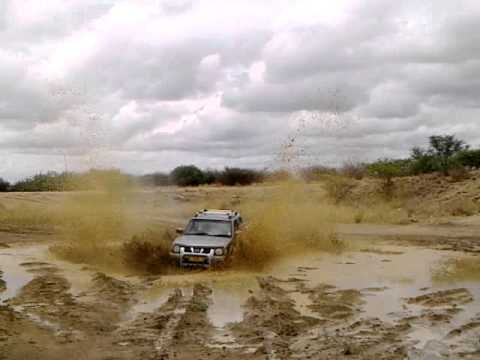 The drought in Steamboat (for now) is over! If you’re a fan of off-roading, now’s the time to get out and enjoy some mud-driving while you can.
The drought in Steamboat (for now) is over! If you’re a fan of off-roading, now’s the time to get out and enjoy some mud-driving while you can.
You may be new to “mudding,” or perhaps it’s just been awhile. While every situation and driver is different, below are some general tips to get you through your next mud adventure:
First, Shallow Mud: 2″ deep or less
1. Tire Pressure. You want the full weight of your vehicle pushing your tires through the mud, so be sure to have your tires filled to the correct pressure. Too low, and they will spread out your vehicle’s weight, not offering maximum traction.
2. Speed. Avoid high speeds and quick acceleration. With a thin layer of mud covering firm ground, the scenario is akin to driving on ice. Therefore, if you do find yourself spinning, avoid braking. Allow your car to decelerate and start over, more slowly, allowing the wheels to gain traction.
3. Prep and Planning. Measure the mud BEFORE you drive in it. Engage your 4WD (4L if you have it) and start slow. Increase speed gradually, until the point you feel yourself skidding or sliding. At this point, back down to the the lower speed.
4. Mountains. If you will be climbing and descending, here are some additional tips: When ascending you may need to add a little accelerator to help the vehicle climb, but not too much so as that the wheels spin out. When descending you may find that the vehicle starts to slide even when you’ve got yourself into the correct gear to allow sufficient engine braking to control the descent without touching the brakes. In this case gravity is pushing the vehicle down the slippery slope at a faster rate than the wheels are turning. The only way to get the wheels turning faster is to, yes, press the accelerator. Strange, but it does work.
Second, Deeper Mud
1. Preparation. Again, check the mud’s depth. Be sure the mud isn’t TOO deep for your vehicle’s capacity! This will save you time, and likely money, later when faced with recovering your stuck vehicle.
2. Deep Ruts. Watch out for deep ruts left by larger vehicles, in which your vehicle can get “hung up” – i.e., the ruts are too deep and the center portion catches on the axles.
3. Stop and think. If you cannot move forward, put your vehicle in reverse. 90% of the time, if you select reverse you will be able to get out the way you came in. Keep your wheels straight. Wheels at an angle to the direction of travel will add resistance to you going forward. Keep a good sense of where your wheels are pointing.
4. Consistency. Thick, dense mud is much more difficult, as it causes the mud to clog up the tires. Unless you have a set of tires that have a self-cleaning tread pattern, you may not even have a chance. Mud that is less-dense (more liquid) is a little bit easier as the water helps “clean” the tire as you go through.



